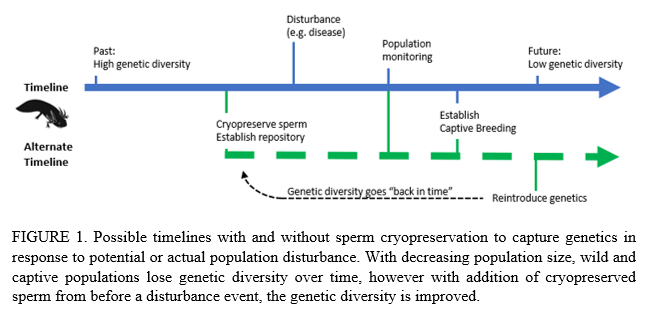HOW CAN WE INTEGRATE GERMPLASM REPOSITORIES INTO THE CONSERVATION LANDSCAPE?
The climate crisis currently at play worldwide has led to a long list of stressors on biodiversity in a wide array of ecosystems. Aquatic environments are often sensitive to seemingly small changes, with many organisms being affected by disruptions to habitat. Germplasm repositories have the potential to advance and complement current conservation efforts, at a relatively low cost, by preserving the genetic diversity of species and allowing correction of genetic effects caused by decreasing population sizes. For example, by reintroducing sperm collected before a disturbance event, captive breeding programs can improve genetic diversity of captive and reintroduced wild populations (Figure 1). While this approach has been used successfully in some species , this approach is often overlooked and has experienced a slow uptake in aquaculture and conservation. National s tock centers, such as the Ambystoma Genetic Stock Center (University of Kentucky) , can provide models for such repositories. Ambystoma mexicanum is a valuable research tool for improving treatments for spinal cord and limb injuries, however, is also a relevant example for conservation efforts as this species is considered critically endangered in its natural setting. Our goal is to develop generalizable cryopreservation pathways that can be applied to biomedical model organisms and can be extended to imperiled aquatic species such as amphibians, fishes , gastropods and corals.
